The Red Envelope: Billkin and PP Krit’s Take on a Love Story Beyond the Grave
In a cinematic landscape saturated with remakes, reboots and sequels, you might ...

With the options of luxury hotels, boutiques, and budget-friendly stays in Bangkok these days, travellers are spoiled for choice. But for those who are looking for more than a comfortable bed and a full range of facilities, there are also accommodations that come with a rich past, a fragment of Thailand’s history that serves to enhance the hotel’s allure and give added meaning to your stay. Here are a few of our recommendations for these unique heritage hotels.
The newest kid on the block might be older than most living persons can remember. Baan Tuk Din Hotel and Tuk Din Bar on Dinso Road was only recently renovated, opening last year, in 2022. The hotel was originally part of a colonial-style house dating back to the late 19th century, during the reign of King Chulalongkorn, Rama V. Known as Baan Tuk Din, it was presumably built after 1898—when Dinso Road was constructed—by Lt Gen Phraya Maha Surasena, also known as Klin Saeng-Xuto, who had been posted to the Viennese Imperial Court for more than 10 years, and his son, Major Luang Sorasithayanukarn.
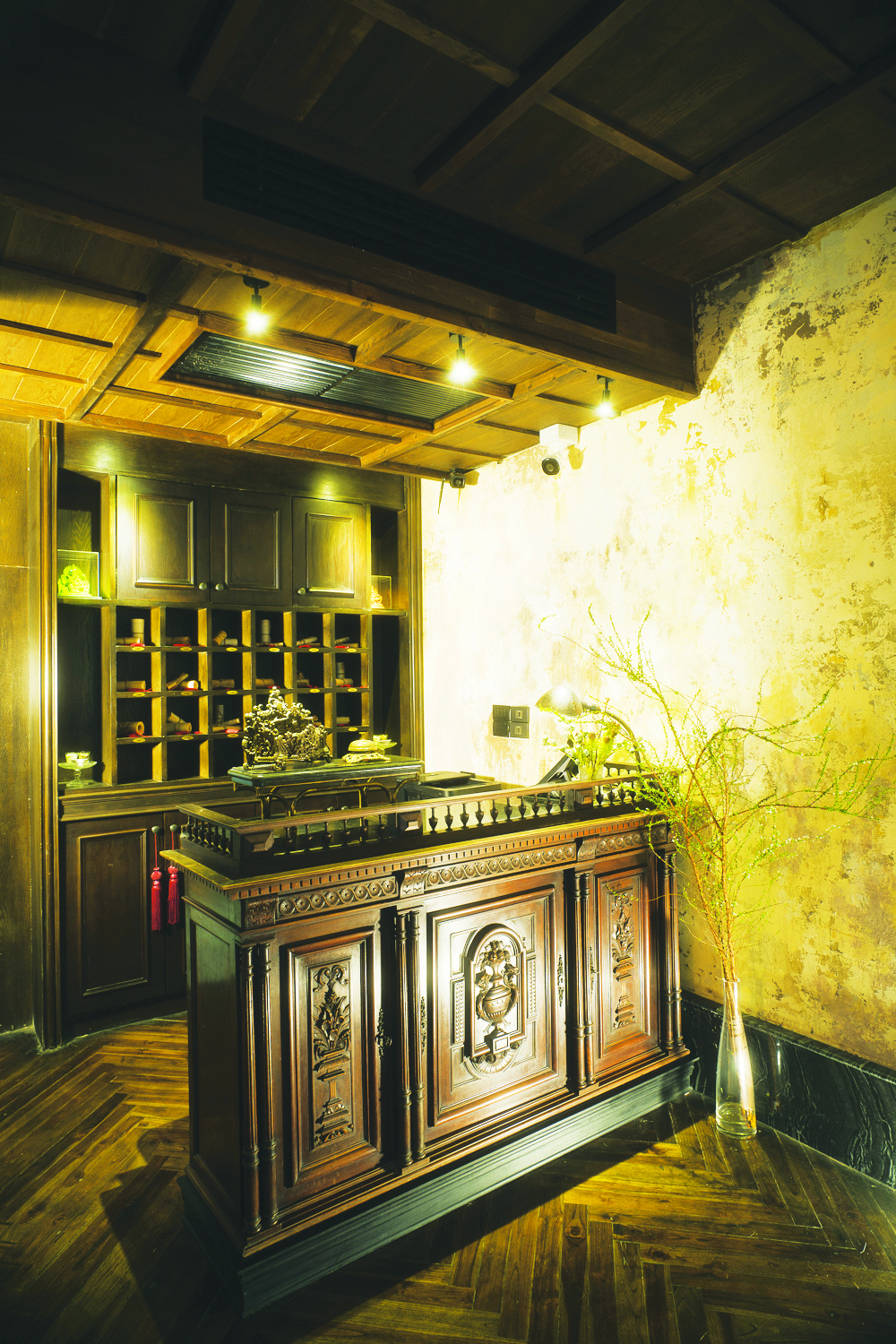
The reception desk takes visitors back in time upon arrival.
Baan Tuk Din originally comprised one main house, a two-storey brick building painted in the pale yellow known as Schönbrunn Yellow, after the colour of Schönbrunn Palace in Austria—a very popular colour for colonial buildings in those days.
The house had an adjacent wooden house, known as Grandmother’s Residence, which had a high platform raised on cement pillars, a hip roof with a gable end, and a gazebo in the courtyard. As a result of the revolution of 1932, the family had to move into Grandmother’s Residence while the main building was leased to the Southern Association, later presenting the title deed of the main building to King Prajadhipok, Rama VII. Today, the main house is no longer in existence; Grandmother’s Residence, on the other hand, is now the hotel and bar.

The stairway leading up to the guest rooms, with a quirky animal skeleton.
The hotel is the brainchild of Rajit Saeng-Xuto, descendant of the owning family, and his cousin, mentor and mother-figure, the late Nida Sudasna, both gurus in the advertising and film industries. They were saddened to see the property run as a seedy, rundown hotel previously and wished to do justice to their ancestors. When the lease contract ended for both the house and the 80-year-old shophouse in front, they began conducting research into the history of the house, the neigbourhood, and the period. Despite Nida’s passing, Rajit was determined to follow through on the vision, with Nida’s sister, Buranee Rachjaibun, contributing to the research efforts.
The house itself was terribly rundown, and the team from Tava Architects stripped away the add-ons, keeping what they could of the combined wood and brick structure: the roof, the ceiling, the doors and windows, and the air vents. The framework was reinforced, basic amenities upgraded and modern bathrooms installed. The layout was kept much to its original, enhancing mainly the flow and access of staff and guests.
The shophouse now houses the main lobby and the Tuk Din Bar on the ground level, with eight guest rooms on the second floor. Grandmother’s Residence offers 10 guest rooms of varying shapes and sizes, following the contour of the original house.
Since none of the original furniture remained, Rajit travelled the world in search of vintage pieces that would fit the colonial period. His artistry and polished taste have ensured that everything fits in faultlessly, with a few quirky animal skeletons reflecting the European fascination with “curiosities”.
At Baan Tuk Din Hotel, guests are offered a choice of a Western breakfast or a Thai-style breakfast based on “Grandmother’s” original recipes. Room rates range from 4,400 baht for a standard room in the shophouse building to over 7,000 baht for a duplex in Grandmother’s Residence.
More information on Baan Tuk Din Hotel and Tuk Din Bar can be found on fb.com/baantukdinhotelandtukdinbar. For bookings, call 062-468-8644.
Located in Bangkok’s old district of Samphantawong, just off the chaos of Chinatown’s Yaorawat Road, is a small boutique hotel that distinctly oozes old-world charm. Dating back to 1916, or BE 2459—the year that gives rise to the hotel name—the original house was built by the Vadanyakul family during the reign of King Vajiravudh, Rama VI.
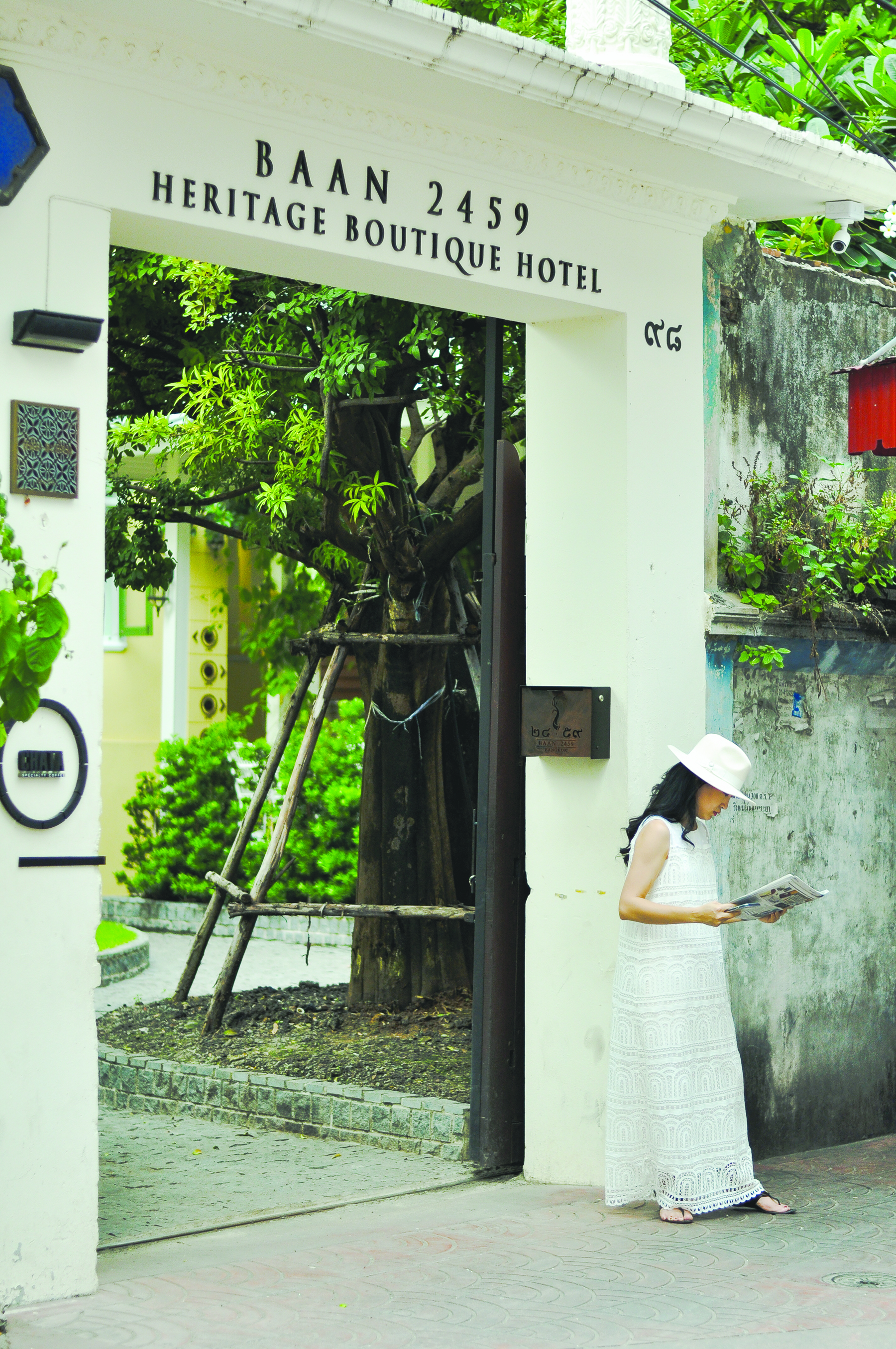
The entrance to Baan 2459 Heritage Hotel.
The house was built by the descendants of an Indian Muslim immigrant by the name of Abdulrahim, who became a wealthy trader in Siam and was known for the Abdulrahim Store on Fueng Nakhon Road. During World War II, Chinatown was the target for both Japanese and Allied air raids, and Prayun Vadanyakul, the resident at the time, had to evacuate the house for the safety of Bangkapi district. The house was left derelict for years.
After the war, the house was rented to Ganghua Chinese newspaper for its printing press, before becoming a teahouse. When Chinatown-based businessman Suksan Eua-areechon started looking for a warehouse to store his goods and saw the “For Rent” sign, he thought nothing about the condition of the property except for the convenience of its location.

The driveway leads up to the main house, with Chata Café on the right.
The house grew on him, and soon he began to appreciate the innate beauty of the colonial architecture. With the owner’s blessing, he took a long-term lease and turned it into a heritage boutique hotel.

Baan 2459 prior to its restoration.
Restoring a century-old mansion is not an easy task, as Suksan found out. He tried to maintain as much as possible of the original structural elements, including doors and windows. Most important was the installation of basic amenities—water and electricity—all of which had to hidden. Indoor bathrooms had to be built in and period furniture sourced.

All bathrooms feature vintage clawfoot bathtubs and individual colour schemes.
The hotel has four guest rooms numbered 2, 4, 5, 9, following the name of the hotel, with two on the first floor and two on the second. Each room is unique, featuring a different look and colour scheme but all designed to make the guest feel as if they have stepped back in time. Each bathroom has been fitted with marble finishings, brass accessories, and vintage clawfoot bathtubs. Even the bespoke tiles have been commissioned to resemble the original.

The spiral stairs lead to the rooftop terrace.
Breakfast is included with the room charge, but rather than serving the usual American breakfast, Suksan created his own menu with khai kata (pan eggs) as the house specialty. Breakfast is served on the second floor, on the landing that looks out over the neighbourhood on one side and a wall lined with portraits of the late King Rama IX on the other. An external spiral staircase leads up to a rooftop terrace, which is perfect for a sundowner. There is also a café on the premises called Chata (Destiny), made from what was once a hidden storage space, that now has a cosy loft feel to it.
For more information on Baan 2459, visit check fb.com/baan2459, or call 082-393-2459.
The Mustang Blu is a stately old hotel that greets visitors at the entrance to Chinatown, just across the canal from Hualampong Train Station. Still retaining a semblance of dereliction rather than taking on a polished façade, the elegant building had been left abandoned for decades but was given a new lease of life a few years ago, unveiling a true masterpiece of colonial architecture that had been hidden for so long.

The Mustang Blu reception area exudes an aura of a museum.
It was hardly a rash undertaking by its owner, Ananda “Joy” Chaladcharoen, a fashion stylist who had experienced success with a previous hotel renovation of The Mustang Nero. On the lookout for a new project, she picked this rundown three-storey structure shaped like a wedge of cake that showed promise of innate beauty, with individual curved balconies and louvred French windows.

The entrance to the wedge-shape building retains its original, unpolished façade.
A century ago, it had first been the location of the Bank of China, and an old-fashioned safe is a testament to that early incarnation. Over the years, it was turned into a hospital (possibly during the Second World War), then a massage parlour—the Harem, then the Cleopatra. It was during this period that each floor was partitioned into smaller rooms, the walls and ceiling boarded up, and aesthetics replaced by practicality.
During the inspection of the building’s interior, Ananda’s team removed bits of cracked ceiling and discovered a dome at the top of the building. Gradually stripping away the wallboards and ceilings that had shrouded the original architectural details, the team realised that the dome stood over a central open area with a winding staircase that oozed old-world charm.

The triangular room shape makes for an interesting bedroom layout, with the bathtub at the far end.
Rather than restore everything to its original brand-new state, Ananda opted to retain the remnants of the building’s “beautiful pain” and tortured past, keeping its cracked plaster and chipped pillars intact. The floors were lined with recycled floorboards, and the interior was styled with vintage furniture, tropical foliage, animal skeletons, and stuffed animal skins, recycled from Ananda’s other life as a stylist. The overall atmosphere is evocative of an old museum or 1950s Cuba, while the colour scheme plays with earth tones as well as mustard, brass, and olive green.
The first floor is now the hotel lobby and restaurant, while the second and third floors are guest rooms—10 in total. Rooms 201 and 301 are the highlighted wedge-shaped rooms, each 65 square metres, taking the top corner of the triangular-shaped building. They comprise both sleeping and living areas, while the other rooms are half in size but as tastefully appointed. Breakfast is included in the room rates, which range from 5,000-7,500 baht per night.
For more information, visit fb.com/themustangblu, or call 062-293-6191.
This gem is actually more of a homestay than a hotel, since owners ML Apichit Vudhijaya and Apasiri Devahastin na Ayudhya consider Sawankhalok River House their home away from home.

The first floor, now enclosed, provides a cosy setting for dinner get-togethers.
Set in a vast 4.5-rai riverside compound in Prachin Buri province, a mere one-and-a-half hours’ drive out of Bangkok, the property is dominated by a three-storey house that originally belonged to Apasiri’s grandfather, Lt Gen Banyat Devahastin, the former Minister of Interior in 1950 and later Minister of Industry, then Minister of Transport. The original house, dating back some 80 years, once stood on Sawankhalok Road in Bangkok, gifted to him by the late King Rama IX for services rendered to the country.
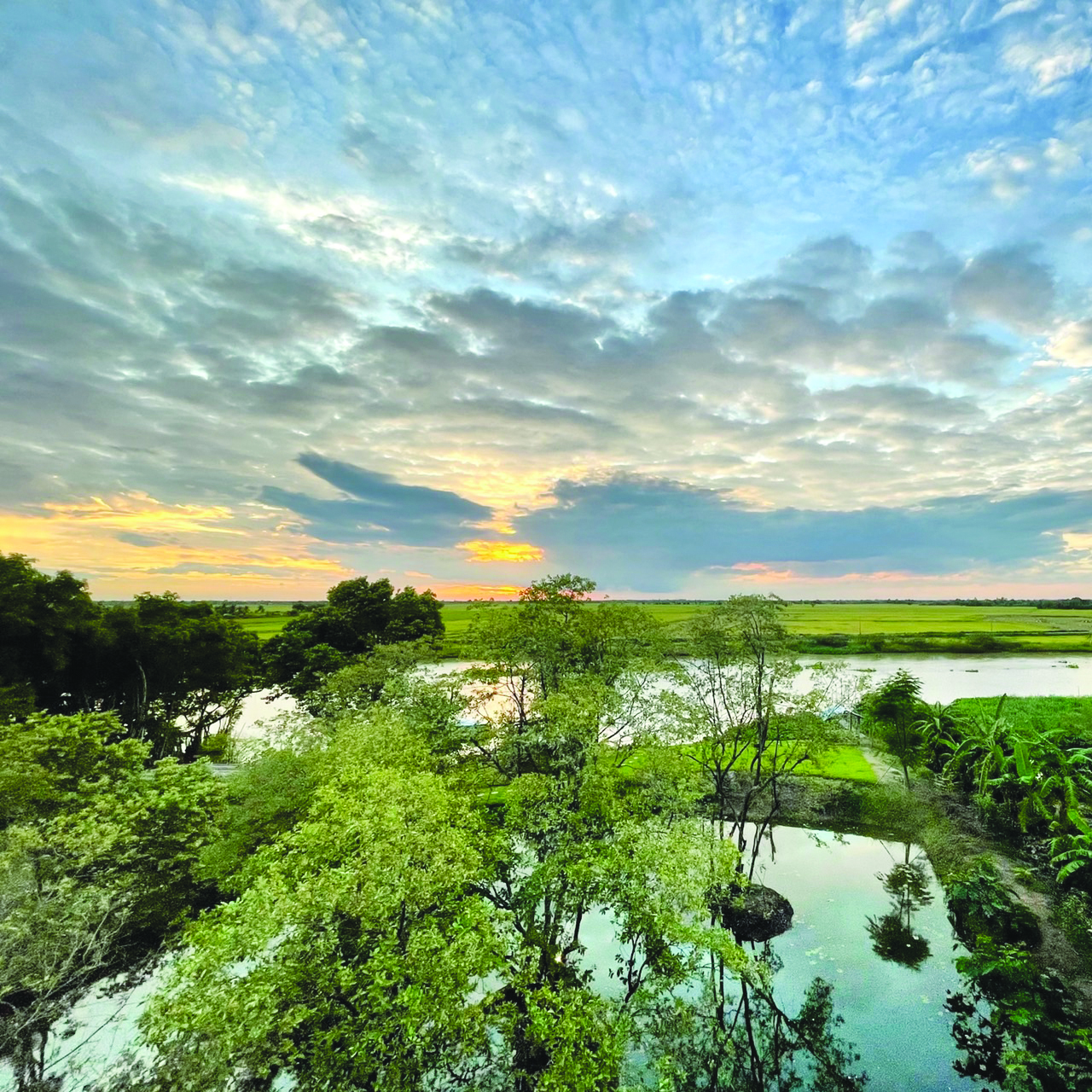
The gardens feature mixed forests following King Rama 9’s theory of
The house was eventually dismantled and rebuilt on a riverside property that ML Apichit acquired after the big floods of 2011. Originally a traditional two-storey house with an open space below, ML Apichit redesigned it, enclosing the downstairs living area, heightening the ceilings, and creating a space that is perfect for the many meditation retreats that he and Apasiri host on the top floor. This area also displays decorative elements that once belonged to ML Apichit’s grandparents, Lt Col Prince Udaya Chalermlabh and Princess Vimalachatra Vudhijaya. With such history to the contents of the house, ML Apichit simply had to designate this room as a private museum.
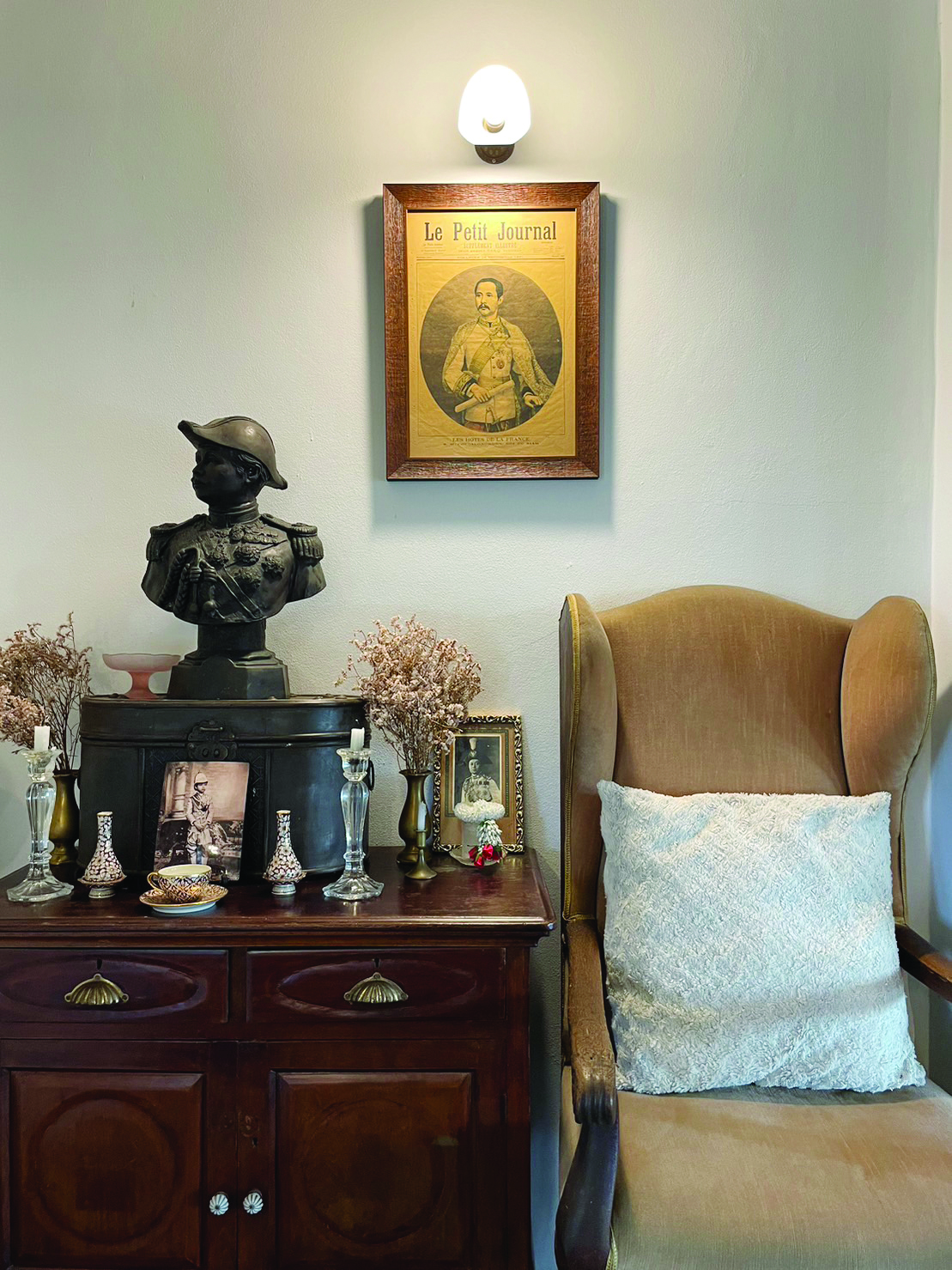
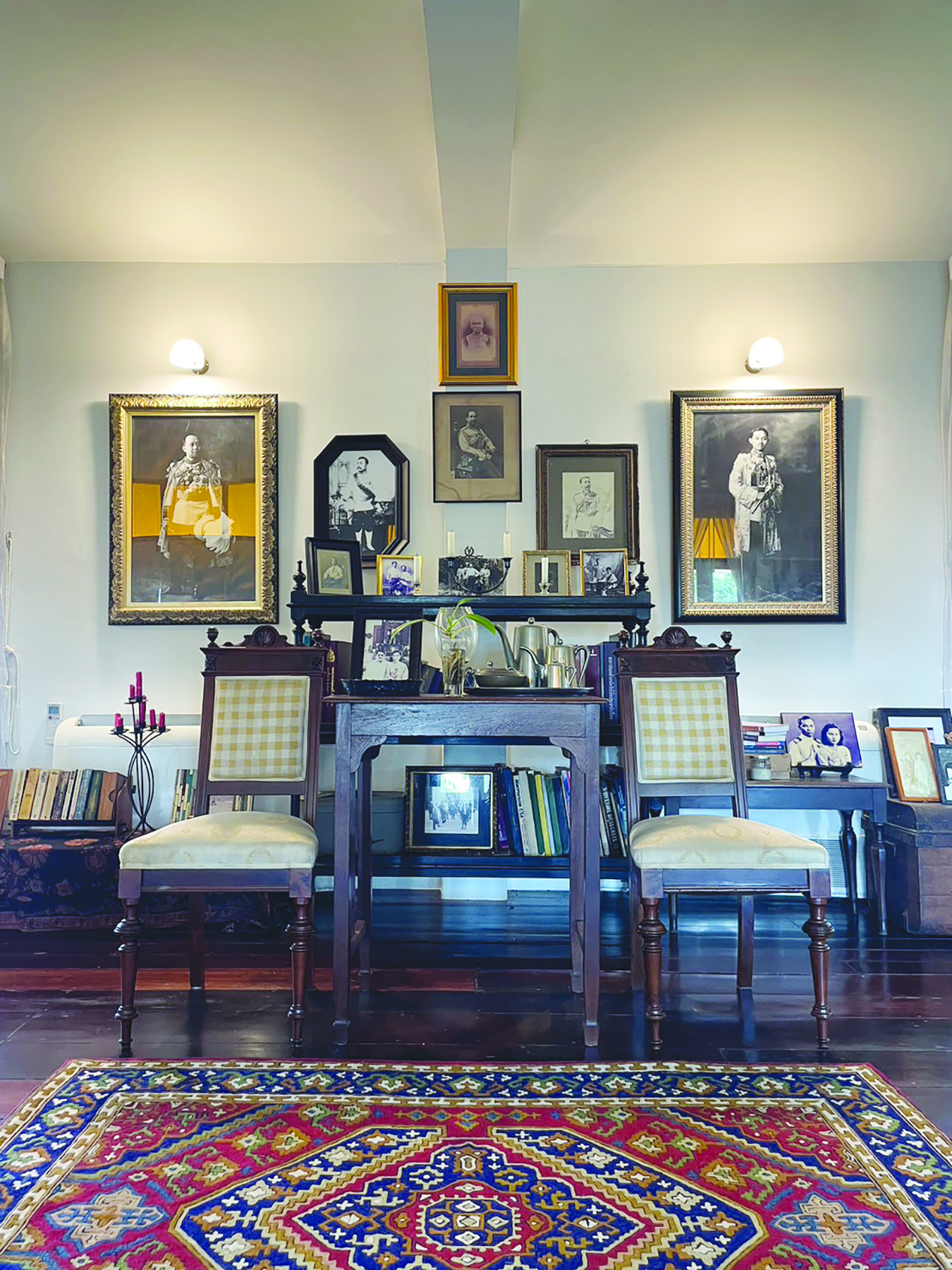
Most of the windows and doors, lighting fixtures, furniture and ornaments were sourced from the original house. There are three guest rooms on the second floor, one linked to the living area by the original staircase, and a fourth bedroom on the top floor. Guests join the house owners for breakfast and dinner followed by an evening of music in the living room, but are free to enjoy the day on their own if they wish.

The top floor features an open area where the owners host meditation retreats.
An additional charm of Baan Sawankhalok are its exterior landscape and idyllic riverside location. The house is fronted by a large terrace overlooking the river with a six-seater, temperature-controlled jacuzzi to provide that extra bit of luxury. A deck leads down to the pier, which not only provides access to the cruise boat, but is also perfect for star-gazing or watching fireflies. An evening cruise along the river to catch the sunset is one of the highlights of a stay here.
As you drive from the gate towards the main house, you might be curious about the landscape design. Rather than manicured lawns and flower beds that draw the selfie crowd, the gardens at Baan Sawankhalok are a jumble of trees, shrubs, and waterways, based on King Rama IX’s theory of “Three Forests, Four Benefits”, which endorse planting mixed forests for the purposes of timber and firewood, fruits and vegetables, and the conservation of soil and watersheds. There are also large ponds for collecting water and raising fish, such as the Mekhong catfish, giant gourami, and shark catfish, while the flock of 20 free-range chickens allow guests to enjoy organic eggs all year round.
An optional activity that ML Apichit and Apasiri offer for guests is a “Dining Etiquette Practice”, which includes a five-course dinner with wine pairing. Guests not only get to enjoy a curated Western dinner but can learn about the art of hosting a dinner party, from invitation cards and seating arrangements to menu selections, table settings, and how to keep the conversation flowing.
Room rates range from 2,400 to 3,800 baht a night. And if the owners like you, they might even let you stay in their third-floor bedroom that offers the best view of the surrounding area.
For more information on Sawankhalok River House, visit fb.com/sawankhalokriverhouse, or call 061-529-9293.
In a cinematic landscape saturated with remakes, reboots and sequels, you might ...
Find out more about your celeb favourites and their most loved vacation ...
These top 5 barber shops in Bangkok are where gentlemen can elevate ...
While traditional TV shows are serving us endless boy-meets-girl tales. Thailand has ...
Sailorr and Molly Santana’s black grills fuse hip-hop swagger with homage to ...
Netflix Thailand has officially announced a new price for base subscriptions We’ve ...
Wee use cookies to deliver your best experience on our website. By using our website, you consent to our cookies in accordance with our cookies policy and privacy policy